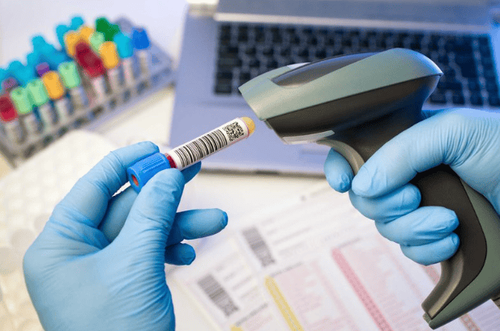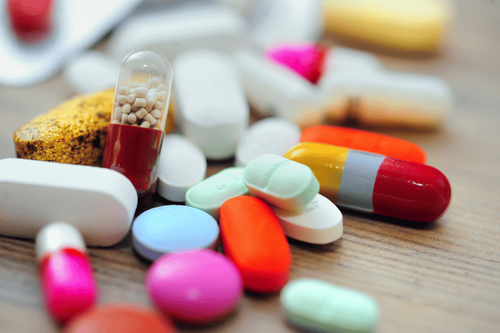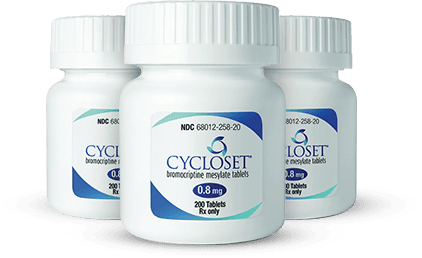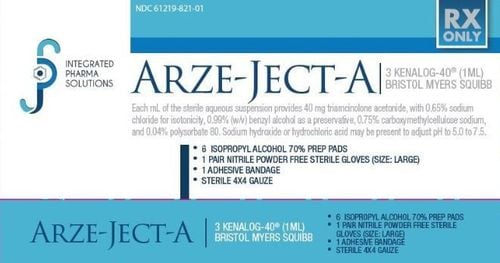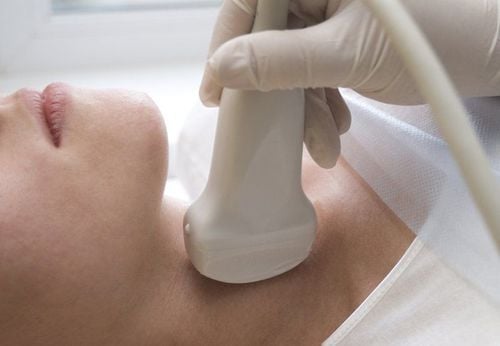This is an automatically translated article.
The article was professionally consulted with Master, Doctor Nguyen Tung Hoanh- Department of Resuscitation - Emergency - Vinmec Nha Trang International General Hospital.There is no cure for type 2 diabetes, but weight loss, a good diet, and exercise can help control the disease. If diet and exercise aren't enough to keep your blood sugar under good control, you may need diabetes medication or insulin therapy.
1. Symptoms of Type 2 Diabetes
The signs and symptoms of type 2 diabetes usually develop slowly. In fact, you can have type 2 diabetes for years without knowing it:Increased thirst Frequent urination Increased hunger Unexpected weight loss Fatigue Blurred vision Slow healing sores Frequent infections Dark areas of skin, usually in the armpits and neck.
2. Diagnosing type 2 diabetes
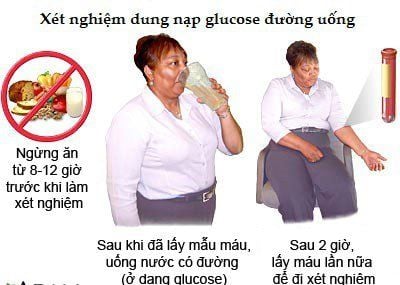
Xét nghiệm dung nạp glucose đường uống
HbA1c Test. This blood test shows your average blood sugar level over the past two to three months. A normal level less than 5.7% and a result between 5.7 and 6.4% is considered prediabetes. An HbA1c level of 6.5% or higher on two separate tests means you have diabetes. If an HbA1c test is not available or if you have certain conditions such as an abnormal hemoglobin variant (hemoglobin variant) that affect your HbA1c test results, your doctor may use the following tests to diagnose diabetes:
Random blood sugar test. Blood sugar values are expressed in milligrams per deciliter (mg/dL) or millimoles per liter (mmol/L). Even if you've eaten, your blood sugar level of 200 mg/dL (11.1 mmol/L) or higher means you have diabetes, especially if you also have the signs and symptoms of diabetes. symptoms of diabetes, such as frequent urination and thirst. Fasting blood sugar test. A blood sample is taken after waking up in the morning, if sugar levels below 100 mg/dL (5.6 mmol/L) are normal, between 100 and 125 mg/dL (5.6 to 6.9 mmol/L) L) is considered prediabetes. If your fasting blood sugar is 126 mg/dL (7 mmol/L) or higher on two separate tests, you are diagnosed with diabetes. Oral glucose tolerance test. This test is used less often than other tests, except during pregnancy. You will need to fast overnight and then drink a sugary liquid and have your blood sugar checked after two hours. A blood sugar level below 140 mg/dL (7.8 mmol/L) is normal. Between 140 and 199 mg/dL (7.8 mmol/L and 11.0 mmol/L) indicates prediabetes. From 200 mg/dL (11.1 mmol/L) or higher after two hours, the person is diagnosed with diabetes. The American Diabetes Association recommends routine screening for type 2 diabetes beginning at age 45, especially if you are overweight. If the results are normal, repeat the test every three years. If the results are somewhere between sick and no disease, ask your doctor when you need to come back for another test.
Screening is also recommended for people under 45 years of age and overweight if there are other risk factors for heart disease or diabetes, such as a sedentary lifestyle, family history of type 2 diabetes , a personal history of gestational diabetes or blood pressure above 140/90 mm Hg.
If you are diagnosed with diabetes, your doctor may perform other tests to distinguish type 1 and type 2 diabetes - because the two conditions use different treatments.
3. After diagnosis
HbA1c levels should be checked two to four times a year. You should discuss your HbA1c goal with your doctor because it can change depending on your age and a number of other factors. For most people, the American Diabetes Association recommends an HbA1c level of less than 7%.An increased HbA1c level may signal the need to change your medication, diet or physical activity level. In addition to the HbA1c test, your doctor will measure your blood pressure and take blood and urine samples periodically to check your cholesterol levels, thyroid function, liver function, and kidney function. Regular eye and foot exams are also important.
4. Treatment of type 2 diabetes

Giảm cân, tập thể dục thường xuyên là những biện pháp hỗ trợ điều trị tiểu đường
Losing weight Healthy eating Regular exercise May use diabetes medication or insulin therapy Blood sugar monitoring These steps will help keep sugar levels in check your blood is close to normal, which can delay or prevent complications.
4.1 Weight Loss Weight loss can lower your blood sugar. Losing just 5 to 10 percent of your body weight can make a difference, although a sustained weight loss of 7% or more from your starting weight is ideal. That means that a person who weighs 180 pounds (82 kg) would need to lose at least 13 pounds (5.9 kg) to have enough of an impact on blood sugar. Portion control and eating healthy foods are an easy way to start losing weight.
4.2 Eat healthy Contrary to popular belief, there is currently no specific diet for people with diabetes. However, it is important to focus on the diet:
Fewer calories Fewer refined carbohydrates, especially sweets Less saturated fat foods Consume more vegetables and fruits Eat more foods with fiber Dietitians can help you come up with a meal plan that's right for your health goals, eating preferences, and lifestyle. They can guide you to monitor your carbohydrate intake, how many carbohydrates you need to eat at meals and snacks to keep your blood sugar stable.
4.3 Physical activity Everyone needs regular exercise and people with type 2 diabetes are no exception. Choose activities you enjoy, such as walking, swimming, and biking, so you can make them part of your daily routine.
Aim for at least 30 to 60 minutes of moderate exercise (or 15 to 30 minutes) all days of the week. A combination of exercise like aerobics, walking or dancing most days, combined with resistance training, such as weight training or yoga twice a week - provides more benefits than just a type of exercise.
Remember that physical activity lowers blood sugar. Therefore, patients need to check their blood sugar before participating in any activity. You may need to eat a snack before exercise to help prevent low blood sugar if you take diabetes medication that lowers blood sugar.
In addition, you need to reduce the time you spend in sitting or lying down activities, such as watching TV. Get up and move around every 30 minutes of sitting or lying down.
4.4 Monitor your blood sugar Depending on your individual treatment plan, you may need to check and record your blood sugar level. Ask your doctor how often you need to check your blood sugar. Careful monitoring is the only way to ensure that your blood sugar remains within the range of your treatment goals.
>> See more: Features of drugs to treat type 2 diabetes
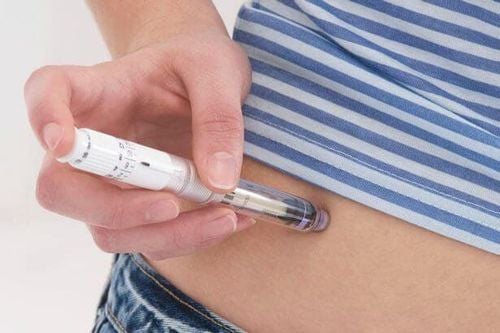
Một số người mắc bệnh tiểu đường type 2 cần điều trị bằng insulin
Examples of possible treatments for type 2 diabetes include:
Metformin (Glucophage, Glumetza, others). Usually, metformin is the first drug prescribed for type 2 diabetes. It works by reducing the liver's production of glucose and improving your body's sensitivity to insulin so that your body uses insulin more efficiently. . Nausea and diarrhea are common side effects of metformin. These side effects may go away as your body gets used to the medicine or if you take the medicine with a meal. If metformin and lifestyle changes aren't enough to control blood sugar, your doctor will recommend other oral or injectable medications. Sulfonylureas. These medications help your body make more insulin, such as glyburide (DiaBeta, Glynase), glipizide (Glucotrol), and glimepiride (Amaryl). Side effects can include low blood sugar and weight gain. Meglitinide. This class of drugs includes repaglinide (Prandin) and nagetlinide (Starlix) - which work like sulfonylureas by stimulating the pancreas to secrete more insulin, but they work faster and have a shorter duration of action in the body. . Some of the side effects of this class of drugs are a lower risk of low blood sugar and weight gain. Thiazolidinediones. Like metformin, this class of drugs includes rosiglitazone (Avandia) and pioglitazone (Actos) - which make the body's tissues more sensitive to insulin. These drugs have been linked to weight gain and other serious side effects, such as an increased risk of heart failure and anemia. Because of these risks, these drugs are usually not the first choice treatment. DPP-4 inhibitors. These medications include sitagliptin (Januvia), saxagliptin (Onglyza), and linagliptin (Tradjenta) that help lower blood sugar, but tend to have a very modest effect. They don't cause weight gain, but can cause joint pain and increase the risk of pancreatitis. GLP-1 receptor agonists. This group of injections slows digestion and helps lower blood sugar levels. Their use often leads to weight loss, nausea, and an increased risk of pancreatitis. Insulin. Some people with type 2 diabetes need treatment with insulin. In the past, insulin therapy was used as a last resort, but today it is often prescribed earlier because of its benefits. There are many types of insulin, and each works in a different way. Usually, people with type 2 diabetes start using insulin with a long shot at night, such as insulin glargine (Lantus) or insulin detemir (Levemir). Discuss the pros and cons of different medications with your doctor. In addition to diabetes medications, your doctor may prescribe low-dose aspirin therapy as well as blood pressure medications and cholesterol-lowering medications to help prevent heart and blood vessel disease.
At Vinmec International General Hospital, we always deploy a screening package for diabetes and dyslipidemia to help detect pre-diabetes early, accurately classify diabetes type, develop a nutritional regimen, monitoring to minimize the risk and complications caused by diabetes.
Please dial HOTLINE for more information or register for an appointment HERE. Download MyVinmec app to make appointments faster and to manage your bookings easily.




